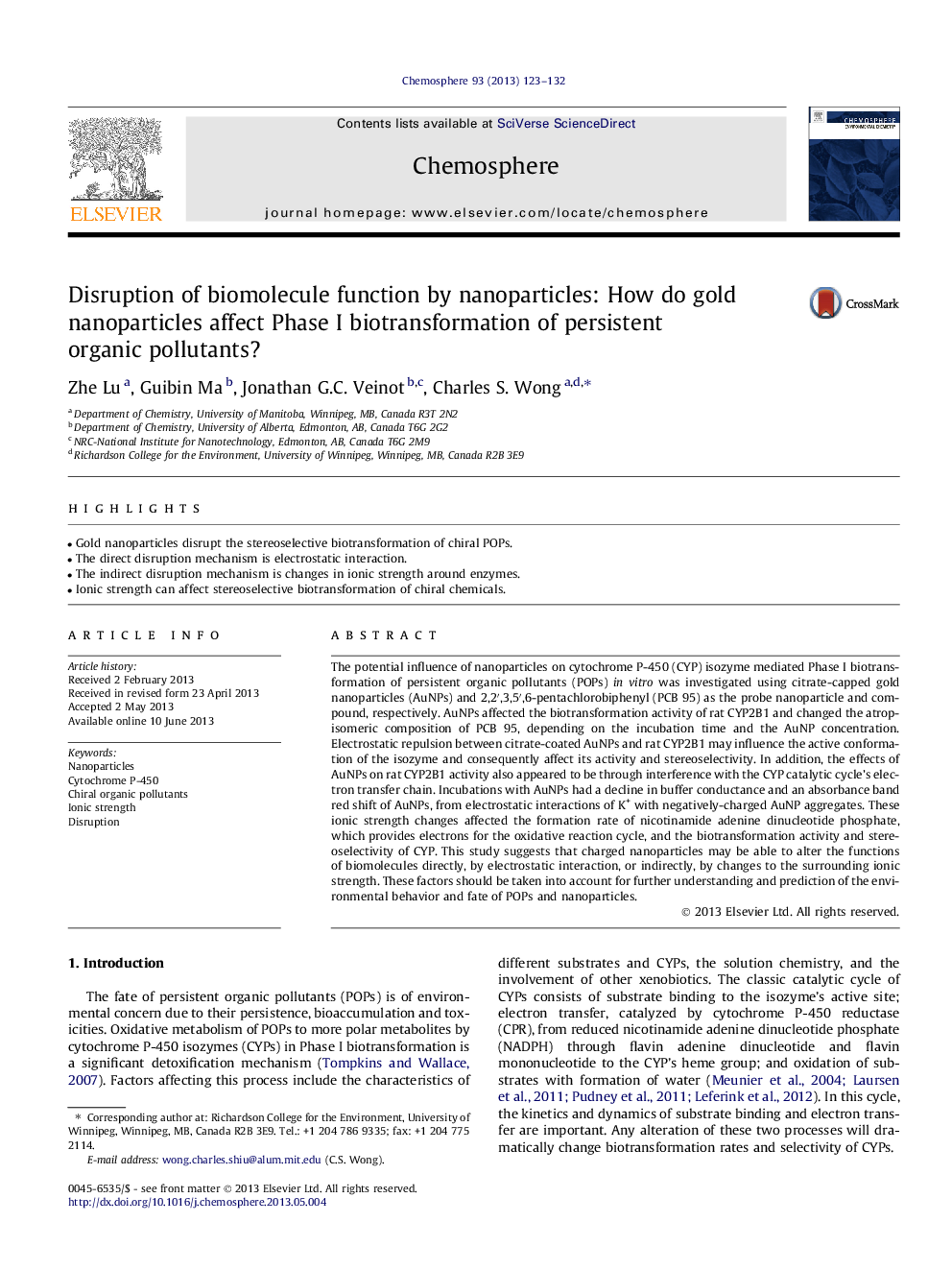| کد مقاله | کد نشریه | سال انتشار | مقاله انگلیسی | نسخه تمام متن |
|---|---|---|---|---|
| 4409020 | 1307457 | 2013 | 10 صفحه PDF | دانلود رایگان |

• Gold nanoparticles disrupt the stereoselective biotransformation of chiral POPs.
• The direct disruption mechanism is electrostatic interaction.
• The indirect disruption mechanism is changes in ionic strength around enzymes.
• Ionic strength can affect stereoselective biotransformation of chiral chemicals.
The potential influence of nanoparticles on cytochrome P-450 (CYP) isozyme mediated Phase I biotransformation of persistent organic pollutants (POPs) in vitro was investigated using citrate-capped gold nanoparticles (AuNPs) and 2,2′,3,5′,6-pentachlorobiphenyl (PCB 95) as the probe nanoparticle and compound, respectively. AuNPs affected the biotransformation activity of rat CYP2B1 and changed the atropisomeric composition of PCB 95, depending on the incubation time and the AuNP concentration. Electrostatic repulsion between citrate-coated AuNPs and rat CYP2B1 may influence the active conformation of the isozyme and consequently affect its activity and stereoselectivity. In addition, the effects of AuNPs on rat CYP2B1 activity also appeared to be through interference with the CYP catalytic cycle’s electron transfer chain. Incubations with AuNPs had a decline in buffer conductance and an absorbance band red shift of AuNPs, from electrostatic interactions of K+ with negatively-charged AuNP aggregates. These ionic strength changes affected the formation rate of nicotinamide adenine dinucleotide phosphate, which provides electrons for the oxidative reaction cycle, and the biotransformation activity and stereoselectivity of CYP. This study suggests that charged nanoparticles may be able to alter the functions of biomolecules directly, by electrostatic interaction, or indirectly, by changes to the surrounding ionic strength. These factors should be taken into account for further understanding and prediction of the environmental behavior and fate of POPs and nanoparticles.
Journal: Chemosphere - Volume 93, Issue 1, September 2013, Pages 123–132